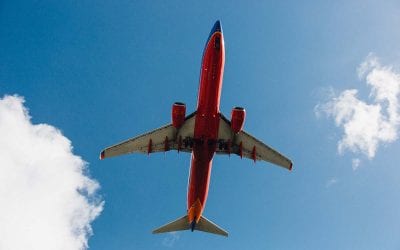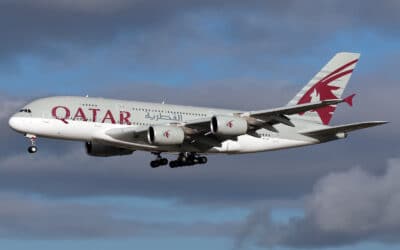Here’s help to convince your traveling companion to join you with TSA PreCheck or Global Entry membership so your travel can be easier and less time-consuming when you travel together.
 Recently, a friend asked me what I would suggest to get his wife to finally apply for TSA PreCheck membership for expedited airport security processing. He got it many years ago because he often flies for business. He’s stuck in long lines when he and his wife vacation because she’s never applied for PreCheck.
Recently, a friend asked me what I would suggest to get his wife to finally apply for TSA PreCheck membership for expedited airport security processing. He got it many years ago because he often flies for business. He’s stuck in long lines when he and his wife vacation because she’s never applied for PreCheck.
Another friend begged me to talk with her husband to convince him to get Global Entry, expedited Customs processing upon returning to the US. She got it because she periodically travels internationally to attend professional conferences. Her husband didn’t have TSA PreCheck either.
Both spouses told me they are tired of being unable to save time via their memberships.
The vast majority of the U.S. flying public aren’t members of TSA PreCheck or CBP Global Entry.
My friends’ spouses aren’t alone. Of the 331 million Americans, about 44 percent flew last year. That’s more than 145 million Americans. Earlier this year, TSA (Transportation Security Administration) announced that PreCheck crossed the 15 million member threshold. With the addition of members of Customs and Border Protection (CBP) trusted traveler programs who have TSA PreCheck privileges, about 32 million American travelers are eligible to use Precheck at airport security.
That means that just 22 percent of air travelers are currently eligible to use TSA PreCheck.
I’ve often considered why more American air travelers don’t apply for PreCheck or CBP’s Global Entry.
In reality, both PreCheck and Global Entry are not costly annually over their five-year term.
For some, it’s cost, though not in my friends’ cases. A $78 fee to apply for TSA PreCheck or $100 for Global Entry can stop some Americans from applying for membership. Please understand, however, that since both memberships last five years, the actual cost is just $15.60 per year for the initial five-year PreCheck membership and $14 per year on renewal. Global Entry is a few dollars more per year.
Many credit cards, particularly those associated with airlines, will pay the total PreCheck and/or Global Entry membership costs.
In addition, for many credit card holders, the membership fee is zero. Many credit cards, particularly ones with airline affiliation, pay the fee in full for either TSA PreCheck and/or Global Entry.
For other air travelers, having to schedule the mandatory interview to complete the application process stops them from applying. Scheduling a Global Entry interview can be a problem. With only 116 Global Entry enrollment centers nationwide, some states have none for the interview. Understanding the problem, CBP instituted the “Enrollment on Arrival” program. It allows conditionally approved Global Entry applicants to complete their interviews upon their return to the U.S. from an international destination without an appointment.
There are more than 500 TSA PreCheck Enrollment Centers in the U.S.
TSA PreCheck applicants can typically easily find an enrollment center for their interview among the more than 500 PreCheck centers. You can even enroll in PreCheck at some Staples stores across the U.S.
While no one can obtain Global Entry privileges by traveling with a member, the same isn’t true for TSA PreCheck. My friend’s wife periodically got PreCheck marked on her boarding pass when she and her husband’s tickets were purchased together. She admitted that it’s not the case every time and rarely at busy airports like Chicago and Atlanta, where all too often the regular TSA security lines are significantly longer than PreCheck lines.
I reminded her that other perks come with PreCheck, such as air travelers in the PreCheck line don’t have to remove their shoes, belt, or lightweight jacket. They can keep their liquids baggie, laptop, and other electronics in their carry-on bag. In many airports, the PreCheck lines use magnetometers, not full-body scanners.
In reality, PreCheck lines consistently process travelers more quickly than standard TSA security lines.
She was convinced with the help of the 75-minute-long standard security line in Atlanta, the last time they flew from there. She’s now a PreCheck member.
I ended up not needing to convince my other friend’s husband. They were off to Europe after she asked me to speak with him. They traveled there with another couple, both of whom had Global Entry. Upon returning to the U.S. they headed to customs. Arriving there, they found that about three planes worth of passengers were ahead of them. Their friends went to the global entry kiosks while they entered the regular line.
It took their friends just three minutes at the Global Entry kiosk. Ten minutes later, they had their bags. They waited for about twenty minutes, then called and said they were going home after they heard my friends had barely moved through their line. At that point, my friend told her husband she would also use the Global Entry kiosk. Within a few minutes, she was through, grabbed her bag, and went to a bar for a drink at the airport. Her husband arrived at the bar 45 minutes later.
After she ditched him and she told him how long she was at the bar, he succumbed. He realized how much time he wasted after that flight and others when returning to the U.S., plus when he didn’t have PreCheck. When they return from their upcoming international journey, he’ll use the “Enrollment on Arrival” program for his interview.
Spouses and partners are more likely to be convinced to follow the lead of their partner or spouse compared to other traveling companions.
I think it’s easier to convince a spouse or partner than a companion to have a meeting of the minds. Plus, I wonder if the frustration of the one who’s a member or anger of the ditched non-member companion might be highly detrimental to the relationship. I know I’d be frustrated if I had to give up using TSA Precheck or Global Entry, but at the same time, I think I’d be sore at being abandoned by my companion on a joint journey.
Time is a precious commodity. Today, the standard TSA security lines are at least as long as before the pandemic. Some travelers say that PreCheck lines are often longer than the standard lines. While that happens occasionally, it’s rare, particularly at the busiest US airports. If the standard lines are shorter, all should remember that anyone can use the standard lines. As to Global Entry, compared to waiting in the general CBP lines, using Global Entry always saves significant time, and it’s faster than Automatic Passport Control or Mobile Passport Control. Since joining Global Entry, I’ve saved an average of 45 minutes at CBP every time I’ve returned to the U.S.
If you fly domestically at least once per year PreCheck seems like a good deal to me. The same is true of Global Entry for international travelers who go abroad every few years, especially if they also fly in the U.S. domestically.
For those who only fly domestically, if your credit card pays for TSA Precheck, I recommend applying for it. It’s easy to apply, and the interviews are short. If you’re flying to or from major airports, even just once per year, considering the time savings and the ease of getting through security, I recommend getting PreCheck even if you have to pay what amounts to less than $20 per year.
If you’re traveling internationally, perhaps just once every few years, I recommend getting Global Entry, mainly if you fly domestically in the U.S. at least annually. Don’t forget that Global Entry gives you Precheck privileges. The time savings when you return to the U.S. is significant and, in my opinion, worth every penny of the $20 per year cost.
READ ALSO:
What can those who love Maui do that is best for the island?
European Union suffers delayed and canceled flights worse than the US
After many years working in corporate America as a chemical engineer, executive and eventually CFO of a multinational manufacturer, Ned founded a tech consulting company and later restarted NSL Photography, his photography business. Before entering the corporate world, Ned worked as a Public Health Engineer for the Philadelphia Department of Public Health. As a well known corporate, travel and wildlife photographer, Ned travels the world writing about travel and photography, as well as running photography workshops, seminars and photowalks. Visit Ned’s Photography Blog and Galleries.



